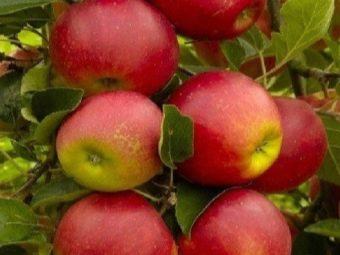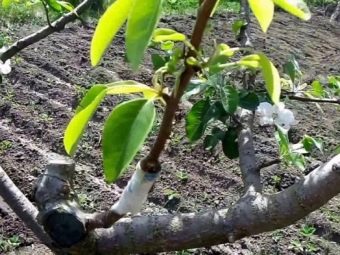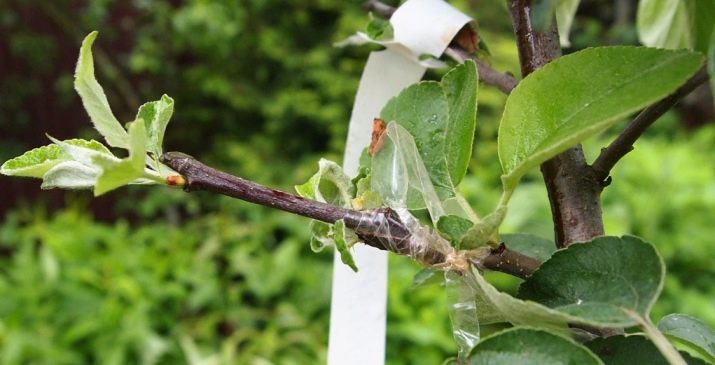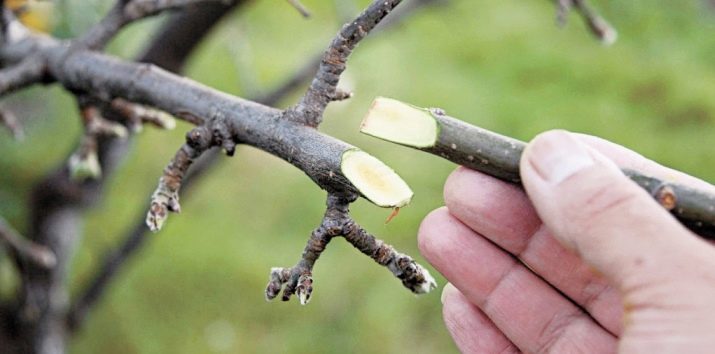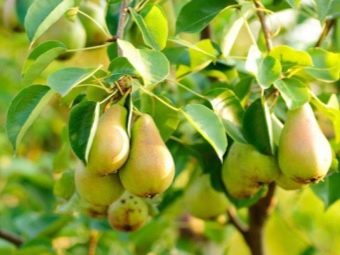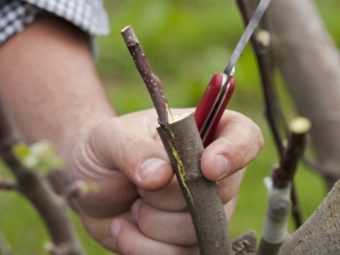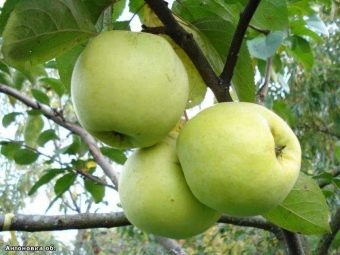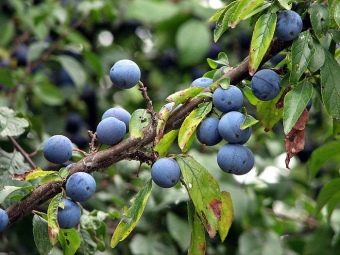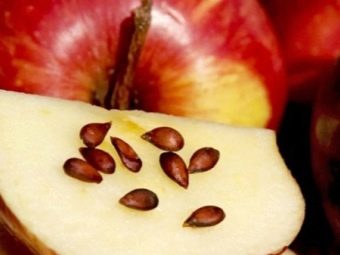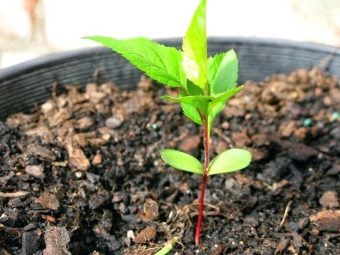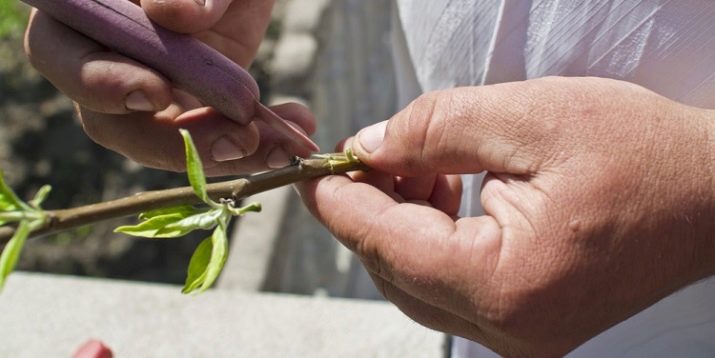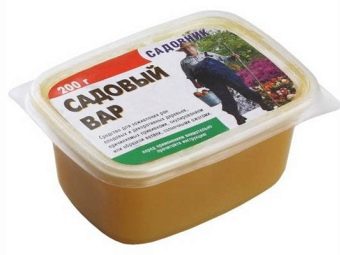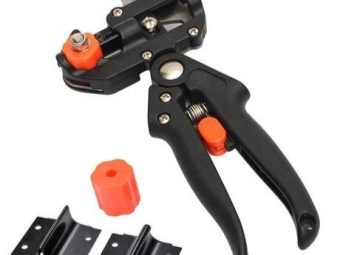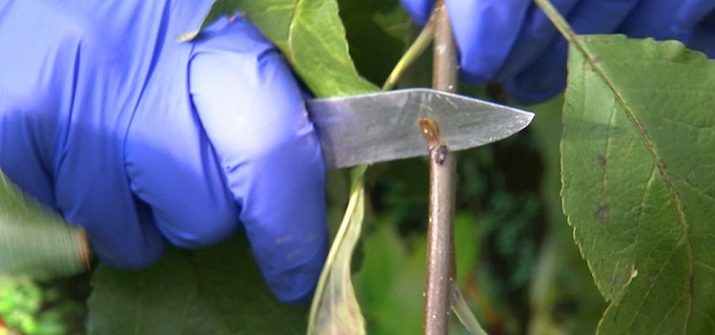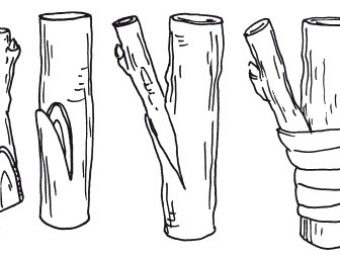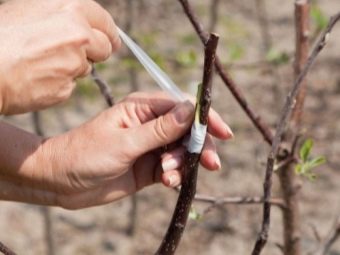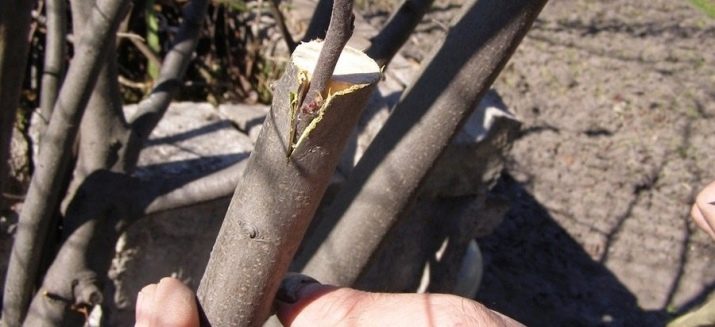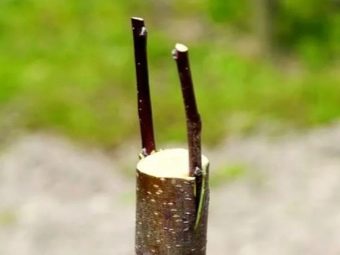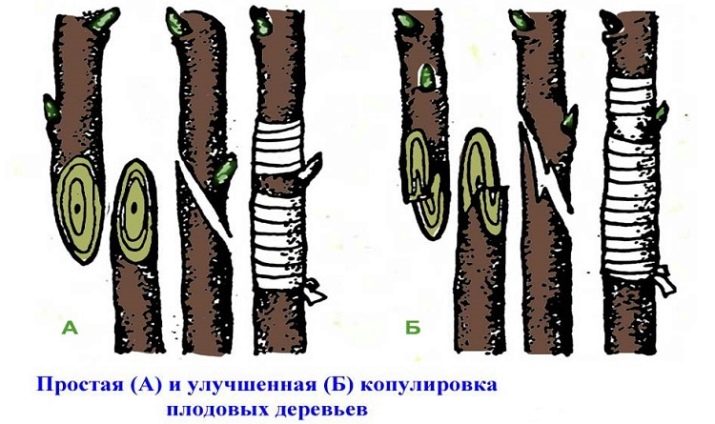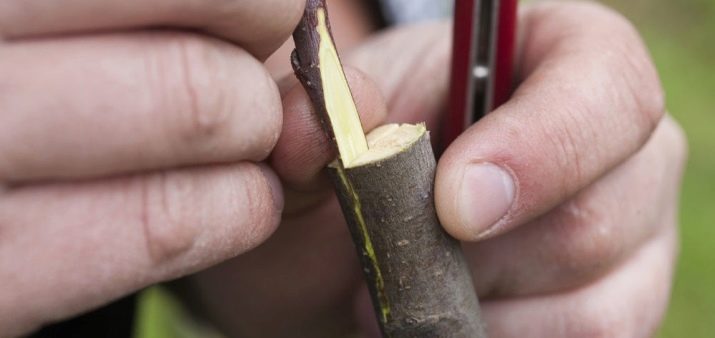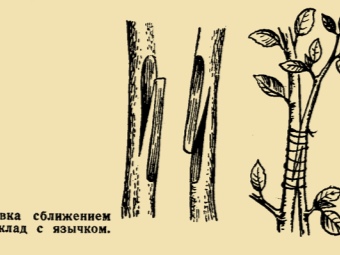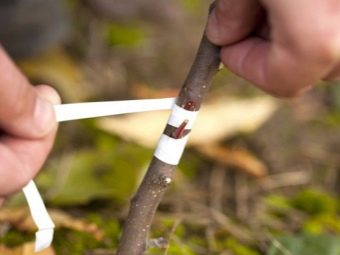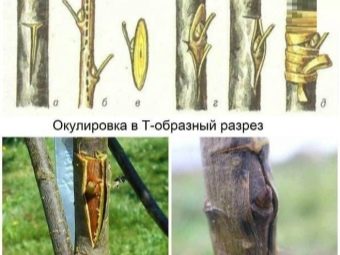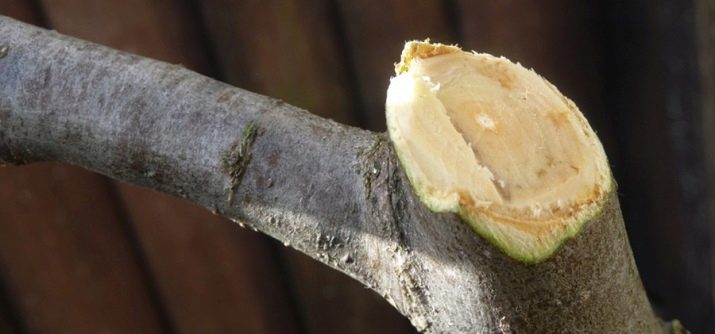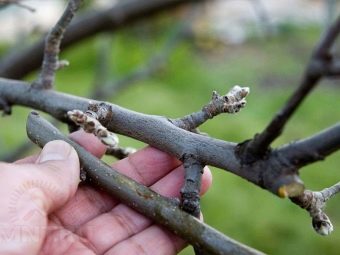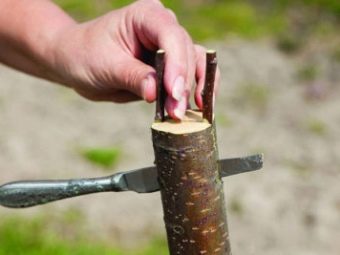How to plant an apple tree?
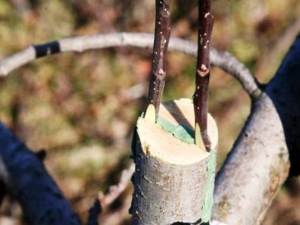
The procedure of grafting garden trees, all gardeners do for various reasons.Some - to increase the yield, others in order to rejuvenate a tree or grow more than one variety, but several at once.
In any case, the grafting procedure does not differ much in complexity, but it is very important to carry it out correctly so as not to harm the plant and not lose the crop.
Advantages and disadvantages
Grafting a plant is a selection method that allows you to save space in the garden or rejuvenate a tree. However, this procedure also has disadvantages.
The advantages of vaccination are primarily attributed easy cultivation of varieties. If we are talking about an apple tree, then on one tree only several different varieties of apples can be grown at once. This is very convenient for gardeners who are quickly bored with the same variety. These fruits can ripen at different times, which is very convenient. The owner of the garden will always have fresh fruit. Pluses also include the ability to change the appearance of the tree, make it younger. Also, vaccination allows you to reanimate a plant that has been injured.
With the help of this type of breeding, you can display dwarf varieties or propagate rare trees. This procedure is also useful in that the fruiting is markedly accelerated, and the fruits are more qualitative. Another advantage is increased frost resistance. In winter or in cold weather, you can not worry about the grafted plant.
But you will not get by with the advantages in this matter, the disadvantages also make themselves felt. The most important disadvantage of vaccination is the speed with which the procedure must be performed. Vaccination should be no more than 30 seconds. If the work takes more time, then the cutting will already be oxidized and simply useless. These cuttings should be immediately discarded.
Another disadvantage is the care of the grafted plant, especially if it was injured before. This business requires a lot of patience, care and attention. It is very important to remove the bandage in time, and also to monitor the general condition of the plant - whether the sun is burning on it or whether it has become overgrown with shoots.
Best timing
The best time for vaccination is spring, namely the last days of April and the first days of May. It is very important to be vaccinated on a cloudy day, but to avoid precipitation. That is why such seasons as autumn and summer are not quite suitable for this, although they cannot be completely excluded either. In any case, for each season chosen for vaccination, there is a special method of selection.
Few know, but the lunar day in this process is no less important than the time of year. It is very important to build on the lunar calendar, but not everyone believes in it. But, nevertheless, more than once it was proved that Plants that were grafted on a “favorable” lunar day, regenerate and heal faster than others. According to folk signs, it is not recommended to inoculate a plant on an “unfavorable” lunar day, as this threatens to kill it.
In no case should such an item as the grafting time be missed. Even such a seemingly trifle is very important in this matter.
Choice of stock
No less important detail is the choice of stock and scion. To carry it out best with the help of an experienced gardener.
The vaccination procedure can be carried out only if there is a high-quality and healthy stock. Often a wild or forest apple tree will be suitable for apple trees of almost any variety. In case there are no such nearby, then you can ask the neighbors who have this tree on their plot.
The first step is to choose a stock. The choice should fall on a healthy tree that does not have flaws and dry branches. It is desirable that it was winter-hardy. Both young and adult trees are suitable for vaccination.
A pear stock allows for a more successful procedure than when using other crops. That is why the majority of competent and experienced gardeners, in addition to apple trees, grow a pear on the site.
If the aim of grafting is to modify the variety, then the age of the tree should be no more than three or four years. There are varieties that are perfectly suited for the role of stock. This is usually an apple tree. It is best to plant cuttings on seedlings that were grown from the seeds of the same tree.
Despite all of the above factors, each fruit plant has its own individual criteria for choosing a stock. It is important to know that in case of a wrong selection, the inoculation simply does not grow together and will lead to the disease of the tree.
Antonovka or Anise seedlings are among the best rootstocks for such a tree as an apple tree. They are quite strong and suitable for vaccinations in almost any year of their lives. For wilderness, related varieties will be relevant. It is not recommended to take a wild apple as a stock, as it is compatible only with Antonovka.
For pears growing in the middle Russian strip, suitable stock of forest pears or "Ussuriyskaya", as well as the grade "Tonkovetka." But for a dwarf pear suitable ordinary quince.
To choose a stock for plum, it is important to know that it has good compatibility with other plums. It is also important to consider frost resistance. It has better compatibility with varieties such as Terna and Ternoslivy.
For rowan trees, only stocks that are resistant to the same conditions as the tree itself, which must be planted, will be relevant.
Recently, clonal stocks have become particularly popular. They are good because they have a great influence on the growth of grafted seedlings. Thanks to these rootstocks, the plant is restored extremely quickly. With the age of the tree, this effect only increases.
The effect on the root system of such rootstocks has not yet been properly studied. But the fact is that roots begin to develop many times faster. In the same way as in the case of the growth of a tree, the influence on the growth of roots over the years only increases. Clone stockpiles are also widely known for their frost resistance. But the minus of such stocks also exists - they are very expensive, and to grow them yourself is quite problematic.
The choice of the stock on the old tree is no different from the choice on the young, it all depends only on the above factors and criteria. To avoid problems with the search and selection of varieties suitable for stocking, many gardeners grow them themselves. However, this is extremely difficult to do, which is why most people still buy suitable varieties, and not grow them. If, however, the choice fell on self-cultivation, then you should take care of this long before the vaccination.
It is best to take the seeds of winter-hardy apple trees. They must be harvested solely from ripe fruit, and it is better that they are large. The resulting seeds should be thoroughly rinsed and dried. After that, they need to fall asleep river sand and put in the refrigerator. Prepared seeds are planted in the ground to a depth of three or four centimeters. This is done in the winter. By spring, these seeds will take the form of strong seedlings that can be safely used as rootstocks.
Equally important is the choice of graft. The tree for this role must be an adult and preferably related to the tree acting as a stock. Kinship is not mandatory, but the fruits of these varieties are still better suited for this. In general, the rules for the selection of stock and scion are not different, but they must be followed.
Description of existing methods
Before you carry out the process of vaccination, it is necessary to prepare cuttings long before that. You can take them only from young and completely healthy trees that have a good harvest, as well as growth. The cuttings should be at least one year old. It is important that it had three or four small buds. It is necessary to cut it so that in the end the cut is right “on the eye”.
The best time to prepare the cuttings is the first half of November, when there are small frosts. The temperature should be about ten degrees.
All cut cuttings must be bundled in one bundle and placed in a container filled with sand. Store them only in a dark basement. In the absence of a basement, the cuttings can be wrapped in a damp cloth and kept in a dark place until the first snow appears. After that, the branches can be carefully deployed and dipped in a snowdrift.
Many gardeners store apple cuttings right in the refrigerator. They must be placed in a damp cloth and covered with polyethylene.
For each season and climate there are different ways of grafting. However, the simplest and most common is the method of grafting in spring.
For any grafting process, you will need tools such as:
- hacksaw for cutting dense branches;
- sharp knife;
- plastic bag;
- garden pitch
These tools are a classic set of each breeder. They were used for the first time after the discovery of this method of selection.
But science does not stand still, and every year they invent more and more convenient and useful tools for gardeners. One such device is a graft pruner. This device can minimize the risk of injury to the tree or its damage. It is suitable for beginners and more experienced gardeners.
This pruner is different from the simple special shape of the blade - here it provides a suitable pair of rootstock and scion. This is the main advantage of this pruner.
There are rules that are relevant to any method of vaccination:
- irrespective of the time of year in which the vaccination is carried out, the stalk should not have buds that have already begun to develop;
- vaccination should be done only during the sap flow;
- All cultivated plants should be planted exclusively on wild plants that were previously adapted to the local climate.
Specifically, for an apple tree, several methods are distinguished at once:
- implanting incision;
- vaccination for the bark;
- capulation with tongue;
- graft splitting;
- implantation in the butt;
- budding.
Implanting a cut
Graft incision is the easiest and most common method among gardeners. The only device you need here is a sharp knife.
Grafting procedure.
- The first step is to prepare the end of the cutting. It should be cut obliquely.
- On a branch of a stock it is necessary to fall on 20-25 centimeters from the basis.
- The knife must be positioned at an angle of 25-30 degrees.
- Next, you need to make an incision through the crust and cut off from it literally 3-4 millimeters of wood.
- In the cut, you must insert the lower end of the cutting. It is very important that we have a tight fit. As a result, a slider should be formed.
- Place of education must be tied up with plastic wrap or bag.
- Next, soak the place of vaccination soda decoction.
Vaccination for bark
Grafting of a peel is considered the most non-traumatic method for all trees to which they want to plant a winter-resistant variety. This makes the stock viable. This method is good because it will help to acclimatize any variety unsuitable for this climate.
However, such a vaccination is quite difficult and requires particularly precise and accurate movements. This method is relevant only in the spring season, when the juices are moving inside the bark.
Algorithm action.
- It is important that the branch grows over time. To do this, it should be planted about four cuttings. After a time, only the strongest are left, the rest are to be removed.
- It is necessary to carry out the vaccination only at a height of 120 centimeters above the ground level.
- Next, you need to incise the crust using a sharp knife, separating it from the wood. The length of the cut should be no more than 6 centimeters. The bark should be shifted slightly, exposing the wood.
- Then you need to make an oblique incision in the extreme part of the cutting. Its length should correspond to the four diameters of the scion.You also need to carefully ensure that the cropped area on the handle is smooth. Many garden workers are often confused with the upper and lower end of the cutting. This is a very rough misdemeanor, capable of stopping the whole process.
- The stalk should be brought under the crust, and then very tightly pressed.
- All this is tightly tied and fixed bandage with garden pitch.
It is very important the speed at which all the work proceeds. For this reason, this procedure is not recommended for beginners. For strapping perfect polyethylene or electrical tape.
Capulation with tongue
For this method, it is necessary to pre-prepare the cuttings of the branches. It is important that they have kidneys. Because of them, grafting of apple trees should be carried out exclusively in the springtime. Another important point is the diameter of the scion and rootstock, which must be completely symmetrical. Graft should be pre-cleaned of foliage and leave only one scapes.
For capillating with the tongue, a graft pruner is useful, allowing you to create neat notches on the branches. On the stock you will need to cut the wood, and on the graft - the crust.
The order of work is as follows:
- Graft is recommended to get into the cut on the rootstock;
- further binding is carried out;
- place should be smeared with soda decoction.
Graft Splitting
This process is suitable for most plants. The size of the rootstock sprigs should not exceed 6 centimeters, otherwise the incision will heal very slowly and gradually rot. It is recommended to carry out this vaccination in June, when the weather is warm enough. Conduct such a vaccination at an elevation of 20-25 centimeters above the ground.
It is best to use a sharp ax, as it will be a little difficult to make a neat cut on a branch with a knife.
The order of work.
- First you need to lower the stock to 8-10 centimeters. This should be done in one quick motion.
- The lower end of the scion should be carefully trimmed so that the length of the incision corresponds to the depth of the incision. The cutout can be both bilateral and one-sided. This should be done only with a sharp knife.
- The slot must be carefully opened and placed inside an awl or a screwdriver.
- To place the graft in the rootstock should be a bridge, so that the lignification points coincide completely. In one split, you can put no more than four cuttings.
- Further, the spacer in the form of a screwdriver or awl is completely removed.
- Then you need to make a garter with twine. Polyethylene or electrical tape is not needed here.
- The vaccinated place should be treated with garden pitch.
- The slot, located on the rootstock, must be buried with clay or clay.
Implantation in the butt
- The branch of the stock must be cut at a height of 15-20 centimeters above the ground.
- The resulting stump should be cut diagonally, dropping from the end of the branch to three or four centimeters.
- The uppermost end of the cutting must be smeared with soda broth.
- The lower end of the cutting must be removed so that the area from the scion and rootstock fully coincide.
- The stalk should be pressed to the site of the stock, and then tied with polyethylene or polyvinyl chloride tape. The second tape is more convenient due to the ability to stretch. This wonderful property allows the grafted tree to grow freely.
- On a stub with a handle, you must wear a plastic bag, tied it up. When climbing the first leaflets, the bag should be immediately removed.
Budding
Budding is perfect for beginners in the garden business, so to make it quite simple, and the success rate is extremely high. The best results are obtained only from the summer vaccination - this is the time of the second sap flow in the crust. This time is in August. The crust at this time is extremely plastic and flexible, it is very easy to cut it. For some time before grafting the tree is watered abundantly. Cuttings is very important to prepare for several days before vaccination. They must be carefully and carefully removed from the sheets.Cut them early in the morning, and then put in a container filled with plain water. The order of work.
- It is necessary to carry out all actions at a height of 20-25 centimeters above the ground level. Using a knife on a branch, a cut is made in the shape of a letter T. A horizontal cut should be no more than 10 millimeters, and a vertical cut no more than 25 millimeters.
- Using a knife, slightly raise the crust of the vertical cut.
- From the cutting should blow off all the dust and choose a fully formed kidney.
- It must be carefully cut off, removing a thin layer of bark.
- Graft should be firmly pressed to the place of the cut on the stock.
- Next, you need to carry out strapping with polyethylene. Also here you can use electrical tape. This should be done so that the kidney on the graft is open.
After two weeks, you need to check how the graft got accustomed. To do this, you need to touch the bark, located near the kidney. If it disappears very easily, the recovery was very successful. And if the crust is very strong, the kidney can dry out very soon. Then it is necessary to repeat the whole procedure anew, implanting a second kidney next to the first one.
How to care for vaccination?
Regardless of which method of vaccination was used, it is necessary to check the plant for the restoration of the scion. As mentioned above, this is done in 14-15 days. If, however, the vaccine did not survive, then the wound should be carefully lubricated with garden pitch. After that, the vaccination must be repeated in the spring or summer period. It is also extremely important to gradually loosen the dressing applied to the vaccinated site. It should not be too tight - it can damage the branch. Another important nuance is the removal of shoots that grow on the ground under vaccination. They should be immediately cut with a sharp knife, otherwise they will interfere with the nutrition of the grafted cutting. In no case can not tear such shoots - so their growth will only accelerate.
When an apple tree is planted in the fall, then before snow falls, it is necessary to spud properly and water the tree - this will not allow the graft to die in the winter. Grafted apple trees must also be protected from the scorching sun. When the weather is hot, the tree must somehow be shaded. When the vaccine has already taken root, and the kidneys have finally woken up, it is necessary to perform circumcision. With the formation of shoots consisting of several buds on the handle, it is necessary to leave only one - the strongest and most powerful. Bottom shoot must be shortened, and all side to remove.
When all the young shoots grow to 20-25 centimeters, they should be immediately tied up. The next garter should be carried out only after they grow to 40-50 centimeters. This should be done only the first two or three years from the time of vaccination. Trees should be watered abundantly, especially if the weather is extremely high. We must not forget about feeding.
When to remove the bandage?
If the process of grafting is carried out in the spring or summer period, the polyethylene tape can be removed after two or three months. If the vaccination was done in the fall, the bandage can not be removed until the onset of spring.
It is also important to follow the grafted plant. Sometimes it is restored extremely quickly, and then the bandage can be removed much earlier. Everything depends solely on the plant itself and for everyone this process takes place individually.
Tips for beginner gardeners
For experienced gardeners, grafting plants is a common thing, not requiring much effort or cost. However, if a novice takes up this business, the task becomes more complicated at times.
One of the main recommendations is the right time for vaccination. This is extremely important, because it is from this factor that the methods of grafting and further care of the plant depend.
It is very important to perform all actions carefully and carefully - one mistake, and all the work will be a waste. Plant grafted plant is recommended in the dark side.As mentioned earlier, grafted seedlings must be carefully protected from the scorching sun. Consultations with more experienced gardeners will also be useful, and even better - their help at first. Well, the most important thing in this business is to love and respect the plant. Proper care and care can work great wonders.
Grafting an apple tree step by step is not much different from the process of grafting other plants. The most important thing is carefulness and special care, because plant grafting is comparable to a surgical operation. Every wrong action can cause irreparable damage to the plant and leave the host without a crop.
To learn how to plant fruit trees, see the following video.

